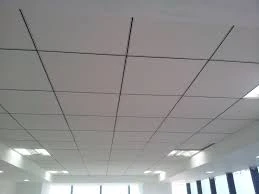Dec . 19, 2024 00:13 Back to list
Compact Ceiling Access Hatch for Efficient Space Utilization in Small Areas
Understanding Small Ceiling Hatches A Practical Guide
Small ceiling hatches are often an overlooked yet essential feature in many buildings. Whether in residential properties, commercial spaces, or industrial facilities, these hatches serve a variety of functions that contribute to the overall functionality and safety of a building. In this article, we will explore what small ceiling hatches are, their purposes, and why they are a critical component in modern architecture.
What is a Small Ceiling Hatch?
A small ceiling hatch is a door or access point embedded within the ceiling of a room, allowing entry to spaces above, such as attics, crawl spaces, or service areas. These hatches can be made from different materials, including metal, plastic, and wood, and they come in various sizes to suit the specific needs of a building. The size and type of hatch selected often depend on the intended use, aesthetic preferences, and structural considerations.
Purposes of Small Ceiling Hatches
1. Access to Maintenance Areas One of the primary functions of a small ceiling hatch is to provide access to critical maintenance areas. Whether it's electrical wiring, plumbing, or HVAC systems, these hatches enable maintenance personnel to perform necessary inspections and repairs without needing extensive disassembly of the ceiling or surrounding structures.
2. Emergency Access Small ceiling hatches can also serve as emergency access points. In cases of fire or other emergencies, having a hatch that leads to escape routes can be a lifesaver. These access points can lead to rooftops or other areas that allow occupants to exit a building safely.
3. Storage Solutions In many homes, particularly those with limited space, small ceiling hatches provide access to attic space for additional storage. This stored space can often be optimally used for seasonal items, decorations, or even unused belongings.
small ceiling hatch

4. Installation of Additional Features Small ceiling hatches can be used to install additional fixtures like skylights or ventilation systems. This improves air circulation within a building and allows natural light to enter, enhancing the overall ambiance of interior spaces.
Design and Aesthetics
While functionality is a major consideration in the installation of small ceiling hatches, aesthetics also play a significant role. Hatches can be designed to blend seamlessly into the ceiling. Many manufacturers offer options that can be painted or finished to match the surrounding decor, ensuring that they do not detract from the overall design of the room. Specific styles are available, from flush-mounted hatches to more decorative options that may enhance the overall aesthetic of a space.
Safety Considerations
When incorporating small ceiling hatches, it’s essential to adhere to safety standards. Proper installation is crucial to ensure that the hatch functions correctly and does not pose a safety risk. This includes considering the size of the hatch in relation to the intended use. For example, a hatch that provides access to a high ceiling area must be easily operable without the risk of falling. Additionally, features like latching mechanisms and safety hinges can help prevent accidents.
Conclusion
In summary, small ceiling hatches are a practical and versatile addition to any building. They provide necessary access to maintenance areas, enhance safety through emergency exit options, and offer much-needed storage solutions in homes with limited space. As design elements, they can be both functional and aesthetically pleasing, ensuring that they fit seamlessly into any environment.
When planning new construction or renovations, the inclusion of small ceiling hatches should not be overlooked. Consulting with architects and builders about the best locations and types of hatches can enhance the utility and appeal of a structure. By understanding their importance, builders, homeowners, and facility managers can maximize the benefits that small ceiling hatches offer, ensuring that they not only meet code requirements but also improve the overall efficiency and safety of the space.
-
Durable Ceiling T Grid Systems | Easy InstallationNewsAug.29,2025
-
PVC Gypsum Ceiling: Durable, Laminated Tiles for Modern SpacesNewsAug.28,2025
-
Pvc Gypsum Ceiling Is DurableNewsAug.21,2025
-
Mineral Fiber Board Is DurableNewsAug.21,2025
-
Ceiling Tile Clip Reusable DesignNewsAug.21,2025
-
Ceiling T Grid Modular DesignNewsAug.21,2025







